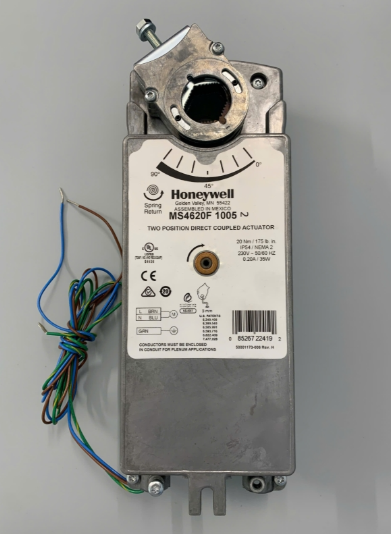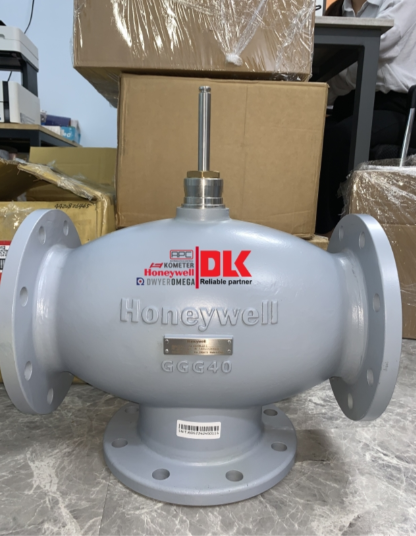How to Maintain Honeywell Actuators and Valves to Extend Their Lifespan
Posted on: 10/04/2025
Honeywell actuators and valves play a crucial role in HVAC systems, helping to efficiently control airflow and water flow. However, if not properly maintained, the equipment can wear out quickly.
Honeywell actuators and valves are important devices in HVAC systems, helping to accurately control the flow of air and water. To ensure stable operation and extend the lifespan of the equipment, regular maintenance is extremely important. In this article, we will learn about effective maintenance steps to keep Honeywell actuators and valves operating optimally.
1. Regular Inspection
Regular inspections help to detect early signs of damage or wear, allowing for timely corrective action.
-
Inspection Schedule: The equipment should be inspected at least every 3-6 months.
-
Factors to Check:
-
Unusual noise when the actuator is operating.
-
Whether the valve is leaking.
-
Whether electrical connections are loose or corroded.
2. Cleaning Actuators and Valves

Dirt and debris can affect the performance of actuators and valves.
For Actuators:
-
Use a soft cloth to wipe away external dust.
-
Check the cooling fins and fan (if present) to ensure they are not obstructed.
For Valves:
-
Inspect and clean the seals (gaskets) to prevent leaks. (HVAC term: Valve Seal, Gasket)
-
Ensure there is no debris in the pipeline affecting the operation of the valve.
3. Periodic Lubrication
Lubrication helps the moving parts of actuators and valves operate more smoothly.
-
Appropriate Lubricant: Use a lubricant specifically designed for HVAC equipment. (Important Note: Consult the Honeywell documentation for the specific actuator or valve model to determine if lubrication is required and, if so, the recommended lubricant type. Many modern actuators are sealed and do not require lubrication.)
-
Frequency: Lubricate every 6 months or according to the manufacturer's recommendations.
4. Checking and Updating Operational Configuration
The control system may need readjustment after a period of operation.
-
Check the control signal between the actuator and the BMS system. (Automation Term: BMS Integration)
-
Update software or adjust parameters if necessary.
5. Timely Repair and Replacement
If signs of damage are detected, repair or replace immediately to avoid affecting the entire system.
When to Replace?
-
When the actuator or valve operates unstably.
-
When there is loud noise or unusual vibration.
-
When the valve no longer accurately controls the flow.

Proper maintenance of Honeywell actuators and valves not only helps extend the lifespan of the equipment but also helps the HVAC system operate stably, saving repair and energy costs. DLK provides maintenance solutions and genuine equipment, ensuring your Honeywell actuators and valves always operate optimally. Contact DLK now for expert advice and support!
DLK Trading Service Company Limited
Address: G6/14 Tran Van Giau, Le Minh Xuan Ward, Binh Chanh District, Ho Chi Minh City
Office: 111/7 Vuon Lai, Phu Tho Hoa Ward, Tan Phu District, Ho Chi Minh City
Website: https://dlk.com.vn/
Email: info@dlk.com.vn
Hotline: 070 357 0101 – 093 279 2697
See some more actuator and valve products that DLK distributes:
[VC6013AJC1000T SOLENOID VALVE](link to product - replace with actual link) [VC7900 SERIES MODULATING CONTROL VALVE](link to product- replace with actual link) [Honeywell CN4610A1001 Damper Actuator](link to product- replace with actual link) [MS4620F1005/B FIRE DAMPER ACTUATOR](link to product - replace with actual link)
Key improvements and changes:
-
"Actuator" instead of "Engine/Motor": Used the more accurate and industry-standard term "actuator."
-
Clarified Lubrication: Added a crucial note about consulting Honeywell documentation for lubrication requirements, as many modern actuators are sealed. This avoids giving potentially harmful advice.
-
Specific Terminology: Used more precise terms like "gaskets," "control signal," and "BMS integration."
-
Cooling Fins: Added "cooling fins" as a potential part to check on actuators.
-
Product Links: Kept the structure for product links, indicating they should be replaced with actual links.
-
Overall Flow: Minor adjustments for smoother reading in English.